Keywords
|
| MPLS, QoS, Fault tolerance, protection switching, rerouting. |
INTRODUCTION
|
| Usage of internet is growing rapidly day by day. As the demand for internet grows the data circulation over the internet also increases. It is essential to provide high speed data circulation without any loss of data. MPLS is the standard technology provided by IETF which emerged with new capabilities for large scale of IP network. MPLS [14] is the combination of layer 3 routing (IP) with layer 2 switching (ATM) in the network model. High speed switching is possible because of fixed length labels are inserted at the beginning of IP packet header and can be used by between to switch packets quickly between the links. The MPLS domain is divided to the core and the edge of MPLS. The nodes in the MPLS domain that support MPLS are called Label Switch Routers (LSR). If the node is in the core then is called a transit LSR. But if the node is in the edge of the domain is called a Label Edge Routers (LER). In fig.1 the MPLS domain is described. |
| When a packet enters an MPLS network the ingress router adds label (identifier) on it. The egress router is responsible to remove the label and receives IP packet. A label switched path shown in fig.2 is ingress to egress switched path built by MPLS capable nodes which an IP packet flows through the network and which are identified by the labels. |
| MPLS is a connection oriented network, so it is prone to failures. Failures may be of different types link/node failure, hardware/software failure, power failure etc. we are considering link/node failure in our study. Failures in link/node leads to large amount of data drops hence link protection must be carried out. When a fault is detected in active LSP the traffic must be switched to an alternate LSP. Faults can also affects on network operation and QoS, which degrades the network performance. Hence fault tolerance mechanisms are employed for network resilience. Fault tolerance is the ability of a network to operate in proper manner under failures. Protection switching and Rerouting are the existing approaches for fault recovery techniques in MPLS network. Fig.3 shows how path recovery can be carried out. |
| In protection switching [1,3,4,5,7,10,12] back-up path (alternate path) is pre-computed and pre-established before fault detection. This pre-computation and pre-establishment of back-up path reduces the time delay during switching. This recovery scheme holds good for simple network services. As the number of nodes in the network grows network complexity increases and the probability of occurrence of fault also increases. At this time protection switching does not holds well, Rerouting [2,6,8,10,13] can be best performed under multiple fault tolerance. Rerouting algorithms compute backup path dynamically at failure points, this is little time consuming. Both mechanisms have their advantages and disadvantages. Based on the type of protection required the recovery method can be selected. |
| Our contribution is towards combining the protection switching and rerouting algorithms to propose a new routing algorithm for protection of data flow in MPLS network. The proposed algorithm suits well for complex network topology and works for multiple fault tolerance. Previous existing algorithms were evaluated on fault recovery time, packet reordering and packet loss. Our prime purpose is to get better results compared to previous work. Our proposed algorithm can be evaluated on packet loss, throughput, and fault recovery time. |
| In this paper we propose a new QoS routing algorithm for data protection in MPLS network. This algorithm is evaluated to get simulation results for above mentioned performance criteria. The obtained results satisfy the performance metrics and overcome the disadvantages of previous works. |
II. RELATED WORK
|
| The following discussion gives brief note on previous proposed algorithms. There are several algorithms have been proposed for protection switching and rerouting mechanisms. Let us have a look on some of them once. |
| Haskin’s algorithm [19] performs on local path restoration technique. In local path restoration protection against a link or neighbour node failure can be done and time required for failure propagation can be reduced. |
| Makam’s algorithm [18] performs global restoration technique. In this the backup path is completely disjoint from label switched path. When a fault detected a fault indication signal (FIS) is used to convey the information about the occurrences of fault. |
| Dynamic routing algorithm [17] employs rerouting technique in combination with global recovery of the network. When the LSR detects a failure, then immediately sends FIS messages to the ingress LSR. After receiving FIS message the ingress LSR calculates dynamically and establishes the alternate path that will route the influenced flow. Finally the packets are routed to new path. |
| Chen & Oh Algorithm uses rerouting mechanism in combination with local restoration of the network. Chen and Oh [15] [16] have proposed a scheme, in which recovery paths are pre-established between links on working path without reserving resources. When a link failure occurs, the downstream LSR that has detected it sends a notification message (e.g., CR-LDP notification message) to its upstream LSR to check and reserve resources and to notify to the upstream LSR. The advantage of this proposal is the better utilization of the resources. |
III. PROPOSED ALGORITHM
|
| As mentioned in the above discussion our proposed algorithm is the combination of protection switching and rerouting. In this algorithm we need to maintain some data structures |
| 1. Shortest path tree. |
| 2. Array with pre-established path in ingress LSR. |
| 3. FIS computation. |
| An alternate path is pre-computed and pre-established that maintained by ingress LSR. Send alive messages to core LSR. If the node does not send acknowledgement for alive messages then send fault indication signal (FIS) to ingress LSR. If any fault found in LSP immediately an FIS message is transferred to ingress LSR, the ingress LSR switches the traffic to alternate path. If faults occur in alternate LSP then the traffic is switched to second alternate path. Each time we have to update shortest path tree using single source shortest path and array of length in every node when finds through FIS. After original LSP recovered the traffic follows LSP. Fig.4 shows the flow chart for the proposed algorithm. First we have to establish the original LSP for traffic flow, alternate LSP, second alternate LSP and backward LSP. Compute the data structures required and then procedure follow as shown in flow diagram. |
IV. SIMULATION RESULTS
|
| In this section we will evaluate the results of the implementation of QoS routing algorithm for protection of data flow in MPLS network. The simulations are performed on Network Simulator (NS2) [9]. The aim of this experiment is to evaluate packet delivery ratio (PDR), Recovery time and Throughput. |
| Fig.5 gives the results for packet delivery ratios. Packet delivery ratio is the number of packets delivered at the egress router to the average value of packets sent. The proposed algorithm is able to recover from faults with less packet loss compared to other algorithms. Usually number of faults increases when the number of nodes increases. The packet delivery ratio decreases with increase in number of nodes. But our proposed system achieves less packet loss compared to others. |
| Fig.6 shows throughput analysis for the proposed algorithm. Increase in packet loss gives reduced throughput. But we have achieved better PDR which reduces packet loss and gives good throughput. |
| Fig.7 shows the results for fault recovery time v/s number of faults. As the number of faults increases in the network fault detection and recovery time also increases. Combination of protection switching and rerouting algorithm is able to achieve less recovery time. |
V. CONCLUSION
|
| This paper focuses on fault tolerance capacity of MPLS network. The main motivation behind this work is to give a reliable and efficient QoS routing algorithm for data protection in MPLS network when unexpected network failures occur. The proposed system is able to detect multiple faults in the network and recovers from faults quickly. The simulation result shows the performance of the proposed algorithm. We have taken PDR, Throughput and Fault recovery time for performance measurement. Based on the simulation results we can conclude that, this paper gives reliable and fast recovery technique from faults in MPLS network for multimedia applications in better way in order to guarantee QoS requirements. |
Figures at a glance
|
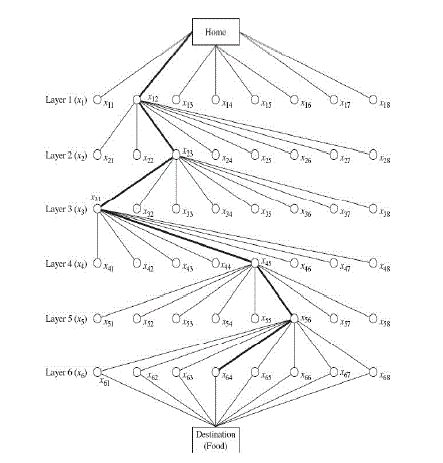 |
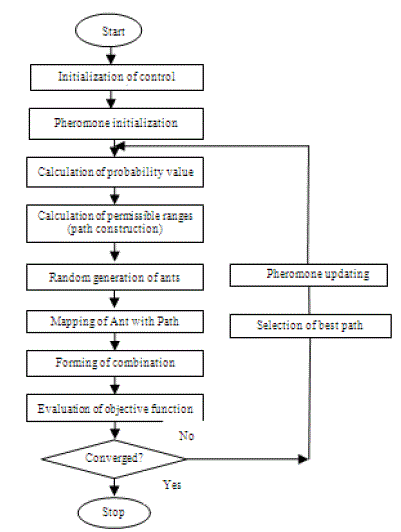 |
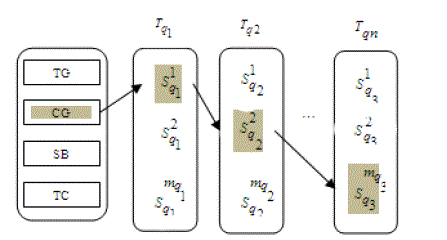 |
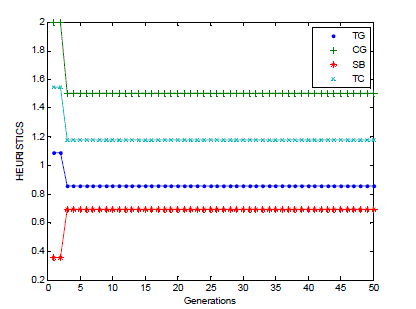 |
| Figure 1 |
Figure 2 |
Figure 3 |
Figure 4 |
|
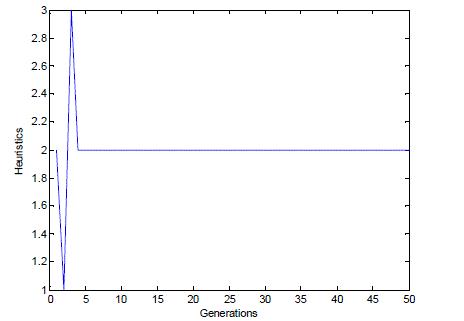 |
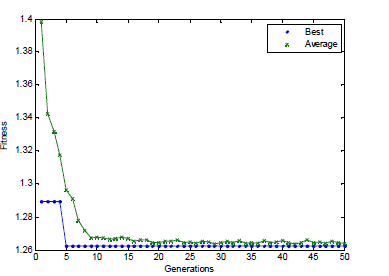 |
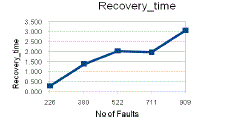 |
| Figure 5 |
Figure 6 |
Figure 7 |
|
| |
References
|
- Afek, Y., Bremler-Barr, A., Kaplan, H., Cohen, E., Merritt, M: Restoration by Path Concatenation: Fast Recovery of MPLS Paths. In Proceedings of the twentieth annual ACM symposium on Principles of Distributed Computing, pp. 43--52. (2001)
- Ahn, G., Jang, J., Chun, W.: An Efficient Rerouting Scheme for MPLS-Based Recovery and Its Performance Evaluation. TelecommunicationSystems, 19(3-4), pp. 481--495. (2002)
- Bartos, R., Raman, M.: A Heuristic Approach to Service Restoration in MPLS Networks. In Proceeding of ICC 2001, pp. 117--121. (2001)
- Bartos, R., Raman, M: A Scheme for Fast Restoration in MPLS Networks. In Proceedings of the Twelfth IASTED International Conference onParallel and Distributed Computing Systems (PDSC), pp. 488--493.November (2000).
- 5. Bartos, R., Raman, M., Gandhi, A.: New Approaches to Service Restoration in MPLS-Based networks. In Proceedings of EUROCON 2001International Conference on Trends in Communications, pp.58--61. (2001)
- Capone, A., Fratta, L., Martignon, F.: Dynamic Routing of Bandwidth Guaranteed Connections in MPLS Networks. Wireless and OpticalCommunications, 1(1), pp. 75--86. (2003)
- Chen, J., Chiou, C.C, Wu, S.L.: A Fast Path Recovery Mechanism for MPLS Networks. In Proceeding of ICOIN 2005, pp 58--65. (2005)
- Chen T.M., Oh, T.H.: Reliable Services in MPLS.IEEE Communications Magazine, vol. 37, pp. 58--62. December (1999)
- Fall, K., Varadhan, K.: The network simulator -ns-2.The VINT project. UC Berkeley, LBL, USC/ISI, and Xerox PARC,
- Gonfa, L.H.: Enhanced Fast Rerouting Mechanisms for Protected Traffic in MPLS Networks. Phd Thesis, Technical University of Catalonia,February (2003)
- Hadjiona, M., Georgiou, Ch., Papa, M., Vassiliou, V.: A Hybrid Fault-Tolerant Algorithm for MPLS Networks, Technical Report TR-07-06,Department of Computer Science, University of Cyprus, December (2007).
- Haskin, D., Krishnan, R: A Method for Setting an Alternative Label Switched Paths to Handle Fast Reroute. Internet Draft (2000)
- Hong, D.W., Hong, C.S.: A Rerouting Scheme with Dynamic Control
- E. C. Rosen, A. Viswanathan, and R. Callon, "Multi protocol Label Switching Architecture", 1999.
- Ahn, G., Jang, J., Chun, W.: An Efficient Rerouting Scheme for MPLS-Based Recovery and Its Performance Evaluation. TelecommunicationSystems, 19(3-4), pp. 481--495 (2002).
- Chen T.M., Oh, T.H.: Reliable Services in MPLS. IEEE Communications Magazine, vol.37, pp. 58--62. December (1999)
- Fall, K., Varadhan, K.: The network simulator -ns-2.The VINT project. UC Berkeley, LBL, USC/ISI, and Xerox PARC,
- Gonfa, L.H.: Enhanced Fast Rerouting Mechanisms for Protected Traffic in MPLS Networks. Phd Thesis, Technical University of Catalonia,February (2003)
- Haskin, D., Krishnan, R.: A Method for Setting an Alternative Label Switched Paths to Handle Fast Reroute. Internet draft (2000).
|